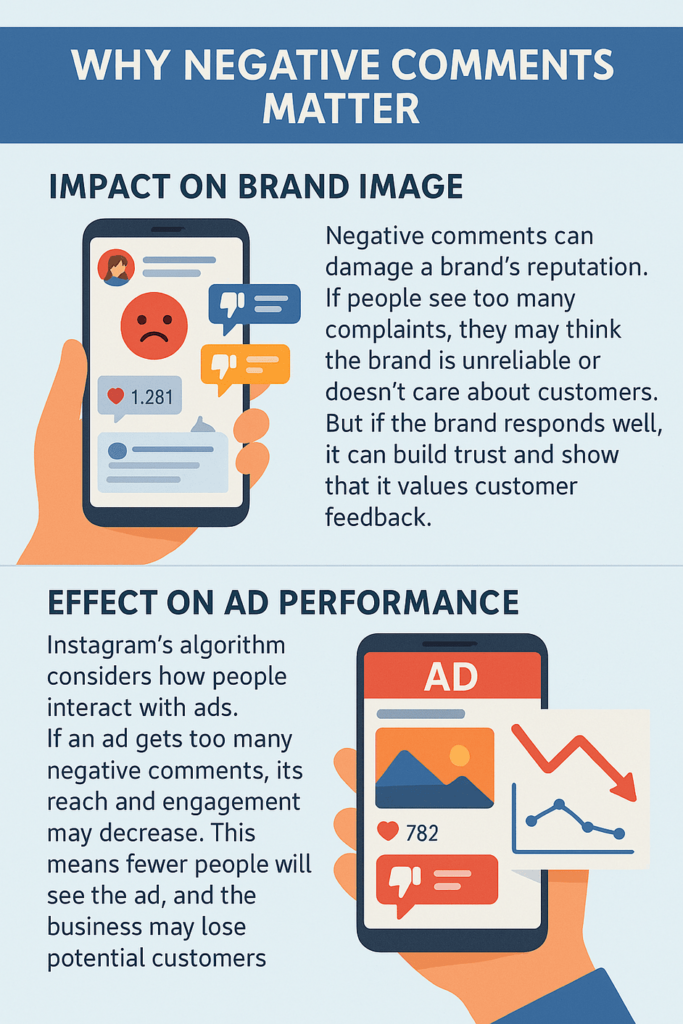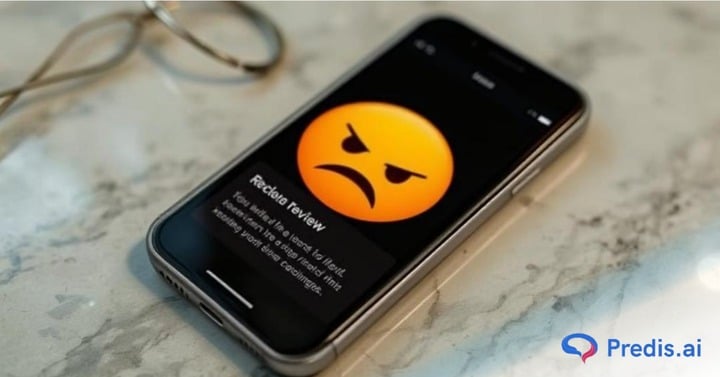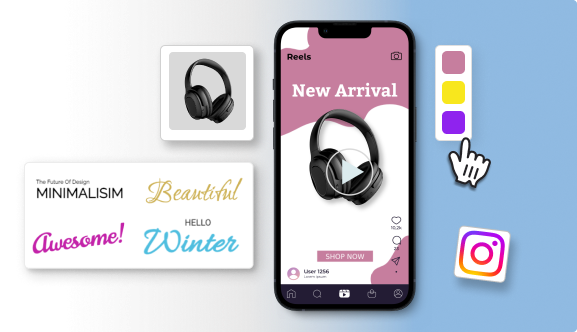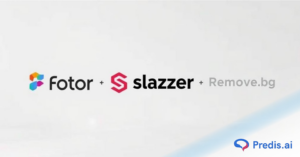Instagram Ads help businesses reach a large audience and attract potential customers. When people see these ads, they may like, share, or comment on them. Comments are an important part of engagement because they show how people feel about the ad and the brand.
However, not all comments are positive. Some people leave negative comments, which can affect how others see the brand. If these comments are not handled properly, they may harm the company’s reputation and reduce the ad’s success.
This guide will help you learn how to handle negative comments on Instagram Ads. It will explain why people leave them, how they can impact your business, and the best ways to respond. You will also see real-life examples of brands that managed negative comments well.
Why Negative Comments Matter
Negative comments aren’t just noise, they can shape how people see your brand and influence the success of your marketing efforts.

Negative comments can hurt your brand and limit your ad reach, but they also offer a chance to show accountability. By responding thoughtfully, brands can turn criticism into an opportunity to build trust and improve performance.
Why Do People Leave Negative Comments?
1. Dissatisfaction with the Product or Service
One of the most common reasons for negative comments is customers’ unhappiness with what they received. If the product does not meet their expectations or there are issues with delivery, quality, or customer service, they may express their frustration in the comments.
Example:
Comment: “I ordered this two weeks ago and still haven’t received it. Terrible service!”
Response: “We’re sorry for the delay! Please send us a direct message with your order details, and we’ll sort this out for you.”
2. Misleading Ads or Unrealistic Expectations
How can you handle negative comments on instagram ads? If an ad promises something that isn’t fully accurate, customers may feel deceived and leave negative comments. This happens when ads exaggerate product features, use heavily edited images, or fail to mention important details like extra costs.
Example:
Comment: “This doesn’t look like the pictures in the ad! So disappointing.”
Response: “We’re sorry you feel that way. Could you share more details? We want to make sure you’re happy with your purchase.”
3. Trolls and Spam Comments
Some people leave negative comments just to provoke a reaction. These comments are often rude, irrelevant, or meant to create unnecessary arguments. Others may post spam, including links to unrelated websites or promotions.
Example:
Comment: “This product is a scam! Don’t buy it!!” (without any real explanation)
Response: (If the comment is trolling) You can ignore it, report it, or use Instagram’s filter to hide such comments automatically.
4. Competitor Tactics
How can you handle negative comments on instagram ads? First, let’s understand sometimes, competitors leave negative comments to damage a brand identity. They may pretend to be unhappy customers or encourage others to leave bad reviews. While it’s difficult to prove, brands should stay professional and focus on delivering great service.
Example:
Comment: “This brand is terrible! I bought a similar product from [competitor name], and it’s much better!”
Response: “We’re sorry to hear this. We always aim to provide the best experience. If there’s anything we can do to improve, let us know!”
Types of Negative Comments
Not all negative comments are the same. Some can be useful, while others may be harmful or irrelevant. Understanding the different types of negative comments can help businesses decide how to respond.

1. Constructive Criticism
Some customers leave negative comments because they want to share honest feedback. This is called constructive criticism. These comments highlight real issues and give businesses a chance to improve their products, services, or marketing.
Example:
Comment: “The product is good, but the packaging was damaged when it arrived. Please improve your shipping.”
Response: “Thanks for your feedback! We’re sorry about the packaging issue. We’ll work on improving our shipping to avoid this in the future.”
💡 Best way to handle it:
- Acknowledge the comment.
- Apologise if necessary.
- Show that you value feedback and will make improvements.
2. Customer Complaints
How can you handle negative comments on instagram ads? Basically such harsh comments come from customers who are unhappy with their experience. They might be about late deliveries, faulty products, or poor customer service. If these complaints are ignored, they can damage a brand’s reputation.
Example:
Comment: “I ordered a week ago, but I haven’t received any update on my delivery. Very disappointing!”
Response: “We’re sorry for the delay. Please send us a direct message with your order details, and we’ll check this for you right away.”
💡 Best way to handle it:
- Respond quickly to avoid making the customer more frustrated.
- Offer a solution, such as asking for more details or providing a refund/replacement.
- If needed, move the conversation to direct messages.
3. Hate Speech or Offensive Remarks
Some comments are not genuine feedback but are instead hateful, rude, or offensive. These may target the brand, its employees, or other customers. Such comments can create a toxic environment and should be managed carefully.
Example:
Comment: “This brand is terrible! You should all shut down!”
Response: If the comment is offensive or harmful, it’s best to report it, hide it, or delete it rather than engage with it.
💡 Best way to handle it:
- Use Instagram’s comment moderation tools to filter out offensive words.
- Report or block users who repeatedly post harmful comments.
- Avoid engaging in arguments.
4. Spam and Bot Comments
Spam comments are often irrelevant and may include links to other websites, promotional messages, or fake reviews. Bots (automated accounts) may also post repetitive or meaningless comments.
Example:
Comment: “Earn $1,000 a day by clicking this link!”
Response: No response is needed. Simply delete or report the comment as spam.
💡 Best way to handle it:
- Use Instagram’s spam filters to automatically remove such comments.
- Regularly monitor your ad comments and remove anything suspicious.
- Avoid clicking on links from unknown users.
How Negative Comments Affect Your Instagram Ads
How can you handle negative comments on instagram ads? Well, negative comments on Instagram Ads can do more than just hurt your feelings—they can impact how people see your brand and how well your ads perform. If left unmanaged, these comments can reduce customer trust and affect your ad’s success.
Impact on Brand Reputation
1. How Negative Comments Influence Potential Customers
When people see an ad on Instagram, they often check the comments before making a decision. If they find too many negative comments about poor service, low-quality products, or misleading ads, they may decide not to buy.
Example:
Imagine you see an ad for a skincare product. If the comments say, “This product caused a rash!” or “They never delivered my order,” you might hesitate to make a purchase.
💡 What brands can do:
- Respond professionally to negative comments.
- Offer solutions and show that you care about customer concerns.
- Encourage satisfied customers to leave positive feedback
2. The Importance of Brand Perception
Your brand’s image is built through customer experiences. If Instagram users see that a brand actively listens to concerns and resolves issues, they are more likely to trust it. On the other hand, if negative comments are ignored, it can make the brand look unprofessional.
Example:
Brand A receives a complaint and responds with, “We’re sorry! Please send us a DM so we can sort this out.”
Brand B ignores the complaint or deletes the comment.
Which brand do you think people will trust more? Most will prefer Brand A because it shows they care about their customers.
Effect on Ad Performance
1. Instagram’s Algorithm and Engagement Metrics
Instagram’s algorithm promotes content based on engagement. Engagement includes likes, shares, comments, and carousels for engagement—both positive and negative. How can you handle negative comments on instagram ads? Basically, if an ad gets too many negative comments, it may signal to Instagram that users are unhappy with it. This could result in:
- Lower reach – Instagram may show the ad to fewer people.
- Higher ad costs – Ads with poor engagement may require a higher budget to get the same results.
💡 How to improve ad performance:
- Respond to negative comments to show engagement.
- Use Instagram’s moderation tools to filter out harmful or spam comments.
- Encourage happy customers to leave positive feedback.
2. Can Negative Comments Lower Conversion Rates?
Yes, negative comments can directly impact sales and conversions. If potential buyers see too many complaints, they may lose confidence and decide not to make a purchase.
Example:
A clothing brand runs an ad for a new jacket. The comments section is full of people saying, “The material is cheap” and “Took months to arrive.” New customers may avoid buying because they believe the negative feedback.
💡 Solution:
- Address complaints quickly and professionally.
- Offer reassurance about product quality and customer service.
- Highlight positive reviews and testimonials to balance negative feedback.

Short Case Study: Examples Of Brands That Handle Negative Comments
1. KFC’s Response to Chicken Shortage
In 2018, KFC faced a significant crisis in the UK when a supply chain issue led to a chicken shortage, resulting in the temporary closure of numerous outlets. Customers expressed their frustration on social media. KFC responded with humor and transparency by issuing an apology featuring an empty bucket with the letters rearranged to spell “FCK Campaign,” acknowledging the mishap. This candid approach was well-received and showcased the brand’s ability to handle criticism gracefully.
2. Domino’s Pizza’s Engagement with Customer Feedback
In 2009, Domino’s Pizza faced a public relations crisis when employees posted a video of unsanitary food handling. The incident quickly went viral, leading to widespread backlash. Domino’s responded promptly by terminating the employees involved, issuing a public apology, and implementing stricter food safety measures. This proactive and transparent approach helped the company rebuild its reputation over time.
3. H&M’s Handling of Controversial Product Image
In 2018, H&M faced backlash for featuring a product image that was deemed racially insensitive. Customers voiced their concerns on social media, leading to widespread criticism. H&M promptly removed the image, issued a public apology, and committed to reviewing its internal processes to prevent future incidents. This swift response demonstrated the brand’s commitment to addressing customer concerns and promoting inclusivity.
Strategies to Handle Negative Comments on Instagram Ads
Negative comments on Instagram Ads are unavoidable, but how a brand handles them can make a big difference. A professional and well-thought-out response can protect a brand’s reputation and even turn unhappy customers into loyal ones. Here are the best strategies to manage negative comments effectively.
Monitor and Respond Promptly
1. The Importance of Timely Responses
How can you handle negative comments on instagram ads? You must know that ignoring negative comments can make things worse. Customers expect quick responses, and delays can lead to frustration. A prompt and polite reply shows that the brand cares and is willing to resolve issues.
2. Tools to Track and Manage Comments
Manually checking comments can be time-consuming, especially for businesses running multiple ads.:
- Monitor Instagram comments in real time.
- Set up alerts for negative keywords.
- Automate responses for common issues.
Responding to Constructive Criticism
1. Acknowledge the Issue
If a customer provides constructive feedback, it’s important to recognise their concern instead of being defensive.
2. Offer a Solution or Clarification
A simple apology and a solution can make a big difference. If the issue is due to a misunderstanding, a polite clarification can help.
Example of a Well-Handled Comment:
🗨️ Customer Comment: “I love the product, but the packaging was damaged when it arrived. You should improve your delivery service.”
✅ Brand Response: “Thanks for your feedback! We’re sorry about the packaging issue. We’ll review our shipping process to improve this. Please send us a DM so we can make it right.”
Handling Customer Complaints Professionally
1. Steps to Resolve the Issue Publicly and Privately
- Public Response: Acknowledge the complaint and offer to resolve it.
- Private Resolution: If more details are needed, ask the customer to send a direct message.
2. Encouraging Direct Communication
Instead of discussing sensitive issues in public, businesses should move conversations to DMs (direct messages) for a quicker resolution.
Example of Turning a Complaint into a Positive Review:
🗨️ Customer Comment: “I never received my order, and no one is replying to my emails!”
✅ Brand Response: “We’re really sorry about this! Please send us a DM with your order details, and we’ll sort it out immediately.”
🔹 Outcome: If the issue is resolved quickly, the customer may update their comment with positive feedback or even leave a good review.
Dealing with Hate Speech and Offensive Comments
1. When to Engage and When to Ignore
Not all comments deserve a response. If a comment includes hate speech, personal attacks, or offensive language, it’s best to report, block, or hide it rather than engage.
2. Instagram’s Guidelines on Reporting and Blocking
Instagram allows businesses to:
- Report abusive comments to Instagram for review.
- Block users who repeatedly post harmful messages.
- Use keyword filters to hide offensive words.
Example of Reporting Offensive Comments:
🚨 Offensive Comment: “This brand is a scam! You’re all stupid if you buy from them.”
🚫 Action Taken: Brand reports the comment, blocks the user, and filters similar words to prevent future incidents.
💡 Quick Tip: Regularly update Instagram’s comment filter with new offensive words that may appear in comments.
Managing Spam and Bot Comments
1. Identifying Fake Accounts and Automated Comments
Spam comments often include:
- Links to unrelated websites.
- Generic messages like “Follow me for free cash!”
- Multiple identical comments posted on different ads.
2. Using Instagram’s Built-in Filters
Instagram provides options to:
- Automatically hide comments containing specific words or links.
- Restrict accounts that frequently post spam.
- Manually delete spam comments that slip through the filters.
Example of a Brand Effectively Filtering Spam Comments:
🚫 Spam Comment: “Win an iPhone now! Click this link.”
✅ Brand Action: Uses Instagram’s filter to block all comments containing “Win an iPhone” and similar phrases.
💡 Quick Tip: Regularly review comment settings to keep up with new spam trends.

Preventive Measures to Minimize Negative Comments
While negative comments on Instagram Ads are inevitable, businesses can take steps to reduce them. By setting clear expectations, using Instagram’s moderation AI tool, and encouraging positive engagement, brands can create a better experience for their audience.
Setting Clear Expectations in Ads
Many negative comments come from customers who feel misled by an ad. To know how can you handle negative comments on instagram ads, you must avoid this, brands must ensure their ads are transparent and truthful.
1. Writing Accurate Ad Copy
- Avoid exaggerated claims (e.g., “Get results in 24 hours!” unless proven).
- Mention pricing, features, and any terms & conditions.
- Use honest customer reviews instead of fake testimonials.
Example: Instead of saying “The best weight loss product ever!”, use “Supports weight management with a healthy diet & exercise.”
2. Using High-Quality Visuals
- Use real product photos instead of overly edited or stock images.
- Show different angles of the product to set realistic expectations.
- Include videos demonstrating the product in action.
Enabling Instagram Comment Moderation Tools
Instagram provides built-in tools to help businesses control the type of comments that appear on their ads.
1. Filtering Specific Keywords
- Instagram allows brands to set up a keyword filter that automatically hides comments containing specific words.
- Common negative keywords to filter: “scam,” “fake,” “bad service,” “refund,” and offensive language.
💡 How to Set It Up:
Go to Settings > Privacy > Hidden Words and add unwanted words to Instagram’s filter list.
2. Restricting Certain Accounts
- If a user continuously leaves spam or abusive comments, businesses can restrict their account.
- This means their comments will only be visible to them and won’t affect brand reputation.
Encouraging Positive Engagement
A strong, positive community can naturally reduce negative comments and make customers feel more connected to a brand.
1. Creating Community-Driven Content
- Post behind-the-scenes content, user-generated content, or team introductions to make the brand feel more personal.
- Encourage discussions by asking questions or running polls.
💡 Example: Instead of just promoting a skincare product, a brand could post: “What’s your biggest skincare struggle? Tell us in the comments!”
2. Encouraging Satisfied Customers to Share Feedback
- Ask happy customers to leave comments about their positive experiences.
- Feature customer testimonials or shoutouts to make them feel valued.
- Respond to positive comments to show appreciation and encourage more engagement.
Example:
🗨️ Customer Comment: “I love this product! It helped my skin.”
✅ Brand Response: “That’s amazing to hear! Thank you for sharing your experience. 💙”
When to Delete or Hide Negative Comments?
Negative comments on Instagram Ads can sometimes be harmful, misleading, or spammy. However, businesses must decide carefully when to hide, delete, or respond to a comment. Handling negative feedback the right way helps maintain brand credibility while keeping the conversation respectful.
When Hiding Comments is the Best Option
Hiding a comment means it remains visible to the person who posted it, but no one else can see it. This is a useful option when:
- The comment contains misinformation that could mislead others.
- It is spam or a bot-generated message.
- The comment is an unrelated complaint that could be better handled privately.
- It is provocative and aimed at creating unnecessary arguments.
💡 Example:
🚫 Comment: “This brand is a scam! They steal money!” (from an account that repeatedly spams similar messages).
✅ Action: Hide the comment and send a direct message to address any genuine concerns.
Hiding comments prevents unnecessary negativity without escalating the situation.
Ethical Considerations of Deleting Comments
Deleting comments should be done carefully to avoid appearing dishonest or suppressing real feedback. Brands should only delete comments if they:
- Contain hate speech, offensive language, or personal attacks.
- Include fake reviews or false accusations.
- Are spam or irrelevant self-promotion.
However, deleting all negative comments can make a brand look untrustworthy. If customers notice their feedback being removed, they may lose confidence in the business. Instead, it’s better to respond professionally to constructive criticism and complaints.
💡 Best Practice: If a comment is deleted, consider reaching out to the person via DM to offer a resolution.
Instagram’s Moderation Policies
Instagram allows businesses to manage their comment sections responsibly. Key moderation features include:
Comment Filtering: Automatically hide comments with specific words or phrases.
Restricting Users: Prevent problematic users from engaging further.
Reporting Comments: Flag abusive or inappropriate comments to Instagram for review.
💡 How to Enable Moderation:
Go to Settings > Privacy > Hidden Words and add harmful words to Instagram’s filter list.
By using these tools wisely, brands can maintain a healthy comment section while ensuring that customer concerns are addressed properly.
Stand Out on Instagram with AI Content 🌟
Frequently Asked Questions
1. Should I respond to every negative comment on my Instagram ad?
Not necessarily. If a comment is genuine feedback or a customer complaint, it’s best to respond professionally. However, if the comment is spam, hate speech, or a troll trying to provoke a reaction, it’s better to hide or report it instead of engaging.
2. What if the negative comment is false or misleading?
If a comment spreads false information, politely correct it with facts. If it’s malicious or deceptive, consider hiding or reporting it. Engaging in arguments can harm your brand’s reputation.
3. Can I turn off comments on my Instagram ads?
No, Instagram does not allow comments to be turned off on ads. However, you can use Instagram’s comment moderation tools to filter out certain words or phrases to reduce negative engagement.
4. What are the best tools for managing Instagram comments?
Some popular tools for monitoring and moderating Instagram comments include:
- NapoleonCat – Helps filter and automate responses.
- SocialPilot – Allows businesses to manage comments across multiple ads.
- Sprout Social – Offers engagement tracking and response management.
5. How do I prevent spam comments on my ads?
- Use Instagram’s Hidden Words feature to filter spam phrases.
- Regularly report and block spam accounts.
- Enable comment filtering tools to detect bots and automated messages.
6. Will hiding or deleting negative comments affect my ad performance?
No, hiding or deleting comments does not directly impact ad performance. However, excessive negative comments can lower engagement rates and discourage potential customers. That’s why it’s important to address concerns professionally rather than just removing them.
7. Can I block users who leave negative comments?
Yes, you can block users who repeatedly leave offensive, harmful, or spam comments. However, for genuine customer complaints, it’s better to respond and resolve their concerns rather than block them.
















